F.U.D. … A Climate Related Acronym
FEAR. UNCERTAINTY. DOUBT.
Change is hard. And that applies to most kinds of change. And what compounds this change, this transition when we move from one technology to another, is when money and resistance to change, are involved. As the world [yes, the planet] grapples with climate weirding and extreme weather events the science is clear, we know what needs to be done: we must rapidly reduce the emissions of the greenhouse gas [GHG] carbon dioxide, into the atmosphere. And this means that one of the largest sources of this heat trapping gas, the combustion of fossil fuels [coal, oil, and gas], must be phased out.
With the gradual acceptance of the science that climate change is caused by “us” [except for some politicians], a new tactic is surfacing with increasing frequency to try to maintain the status quo. The use of F.U.D. is to try and convince people not to change their habits: that these recent changes involved are loaded with all sorts of problems. The idea is to create “Fear”, that the new technology won’t work, “Uncertainty” that it may not be dependable, and “Doubt”, that the technology is not proven and too expensive.
A recent case involves the recall of 2.2 million Tesla vehicles. This fact was carried in long articles by major newspapers including the NYTimes in early February 2024. This involved the warning lights on the instrument panel which were too small, and the letters did not meet the size requirements according to the NHTSA, the National Highway and Traffic Safety Administration. The recall does not involve bringing the car into a shop but would be corrected by an over-the-air fix at no charge.
Most of the news articles did not mention at all the fact that millions of other vehicles manufactured by Ford, GM, Honda, Mercedes-Benz and more, were also recalled recently. The takeaway message seemed to be that EV’s had and are a problem. All the recalls were apparently real, but the articles reporting on this issue were selective and incomplete. It takes careful reading and awareness to realize this.
Apparently, the Norwegians are not having a problem purchasing EV’s. See the circular chart labeled, “January 2024 Norway Passenger Auto Registrations.
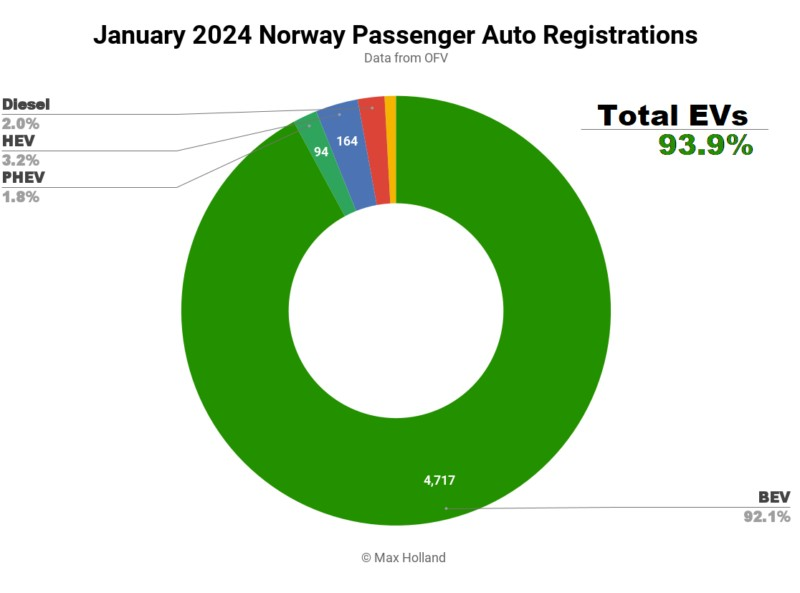
”Full battery EV’s [BEV] were 92.1% of all new vehicles registered in January 2024. Including hybrid EV’s the total was 93.9% for the month. Gasoline and diesel cars were just a few per cent of the total. Government subsidies and an informed public are making this transition work.
Even organizations tasked with forecasting future trends can get it wrong.
See the interesting International Energy Agency [IEA] graph with their forecast estimates for global EV sales in millions of vehicles sold. Bloomberg New Energy Finance assembled this data.
“The actuals” [sales] are shown in the dark, heavy line on the left from 2017 through 2023.
The IEA annual EV forecast estimates were collected and labeled in this graph with multiple lines. These IEA sales volume estimates are illustrated in the shorter lines dating from 2025 to 2030. So, in 2018 the IEA estimate for 2025 was about 400,000 units sold with the 2030 estimate at about 700,000 units sold. One year later in 2019, in a new estimate, the Agency significantly increased their sales estimates to about 650,000 units sold in 2025 and a large increase to about 1,300,000 EV’s sold in 2030.
Their earlier estimates in 2020, 2021, 2022 and 2023 were also well below the trendlines for future EV’s sold. Their new estimate in 2023 for EV’s sold in 2030 [about 3,000,000] is a large increase, by a factor of about 4 over their estimate from 2018. Their earlier estimate in 2018 for 2030 EV sales was only about 700,000 units sold. The IEA has continuously underestimated actual EV sales by a wide margin.
Many analysts disagree with these IEA estimates and think they are too low. Their assessment is that “The S-curve trend” is much more likely and that sales will bemuch stronger and far exceed these estimates. F.U.D. notwithstanding, the transition away from internal combustion engines is accelerating.
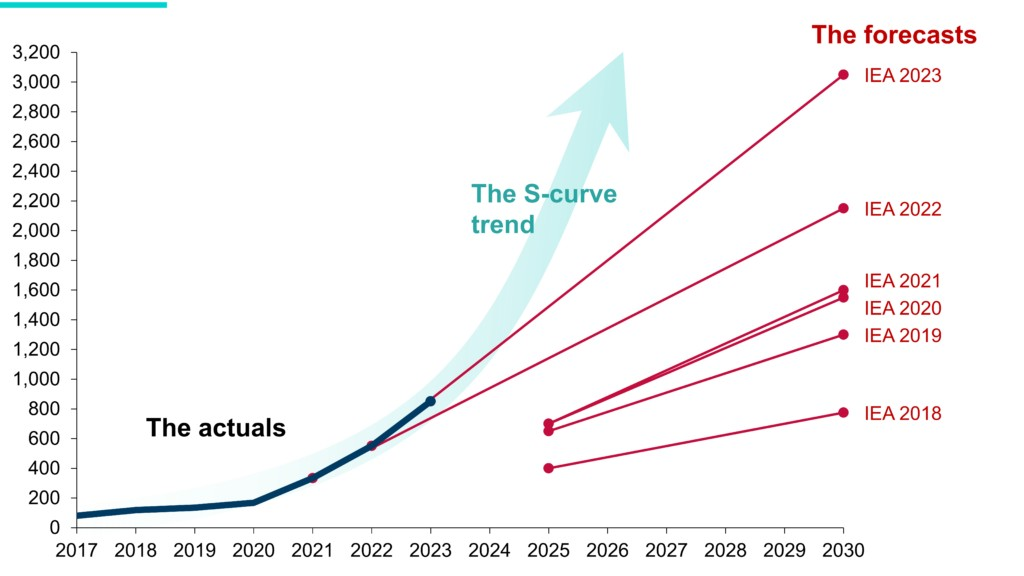
Source: IEA Global EV Outlook (2018-2023) current policy scenarios and actuals; BNEF Long-Term Electric Vehicle Outlook (2023) for 2023 estimate.
And these trends, if they continue, are coming none too soon.
See the bar chart from Climate Central, labeled “10 Hottest Global Years On Record.” The 10 hottest years in the climate record, going back about 150 years, are all since 2014. The source of the data is from NOAA [National Oceanic and Atmospheric Administration], NASA [National Aeronautical and Space Administration], and GISS [Goddard Institute of Space Studies].
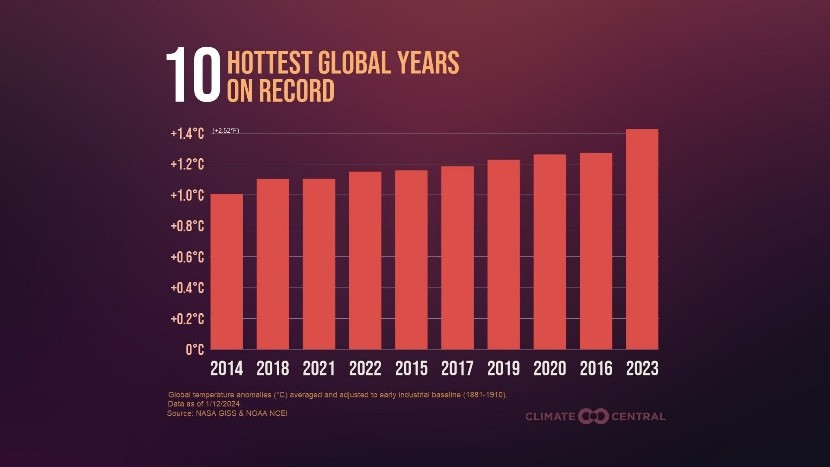
Another telling graphic chart about humans influence on the climate, is titled, “Fewer Frozen Days.” There is variation between years but the data show that theice cover on Lake Ontario is 46 days less than 50 years ago. The environmental and ecological implications of this change are enormous.
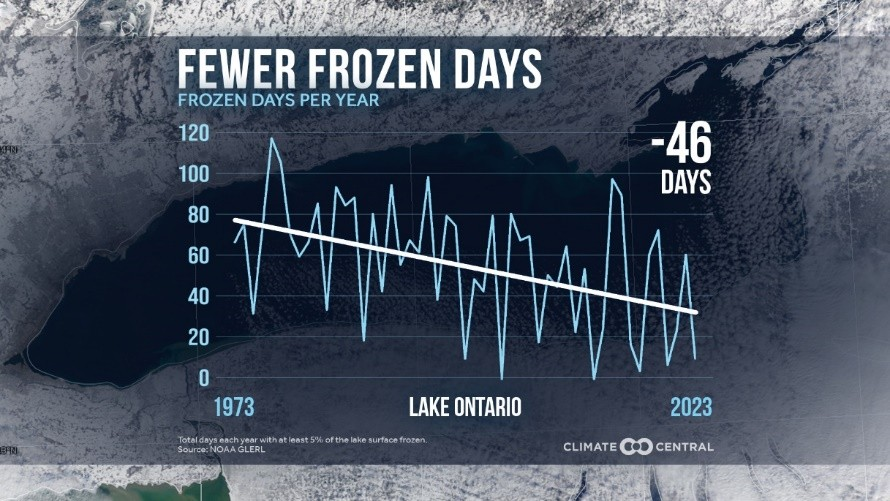
But attempts to educate the public on “Climate” have not stopped. A “Climate Museum” has opened at 105 Wooster Street in Manhattan in 4200 square feet of space. It is “the first museum dedicated to climate change and climate solutions in the United States.” [Wikipedia]. With a combination of information panels and artwork, the free museum attempts to present to visitors the history, impacts, and story of climate change.
See photo of two visitors from the Museum Press Release.
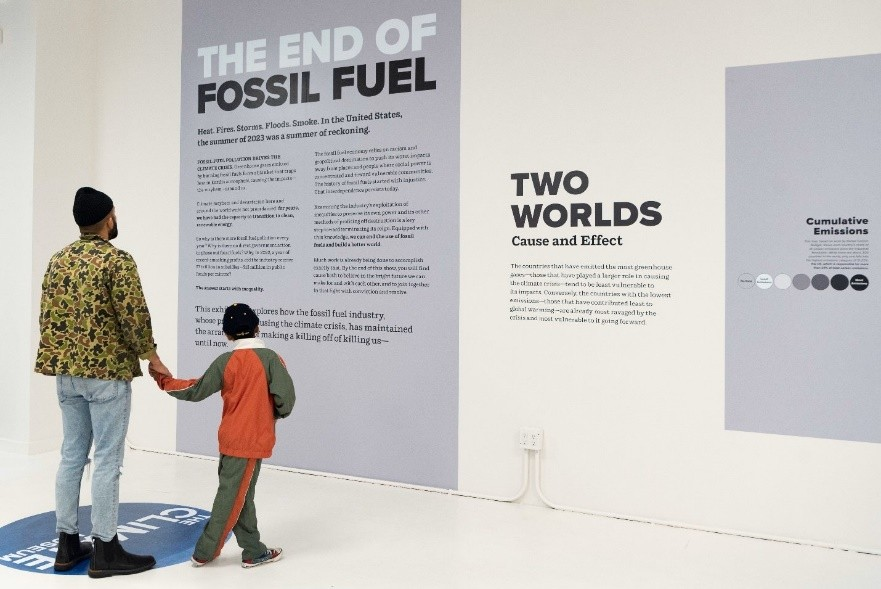
A Climate Museum board member, Dr. Cynthia Rosenzweig, says that they hope to touch on three aspects that visitors will take away with them. First, get the science right, but that “alone will not solve the problem.” Art also must be a component as it “appeals to people’s emotions.” And then the third component; “creating a sense of community.”
Camilo Cardenas, a visiting artist from Columbia said, “The language spoken by scientists and regular people is different. A museum, like this, and art, is the connection between them.”
And so it goes … .
The scientific career of Raymond N. Johnson, Ph.D., spanned 30 years in research and development as an organic/analytical chemist. He is currently founder and director of the Institute of Climate Studies USA (www.ICSUSA.org). Climate Science is published monthly.
Menu



